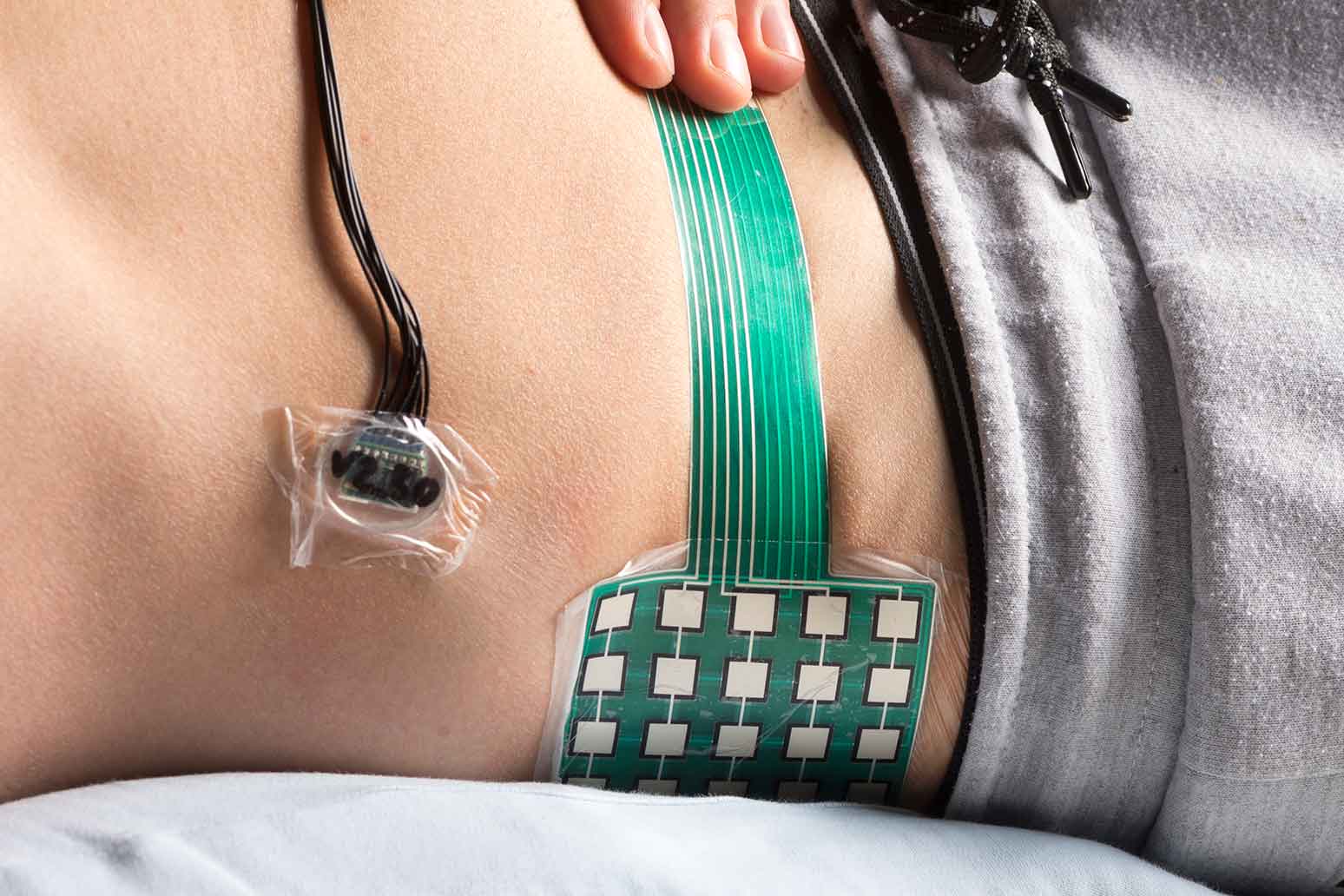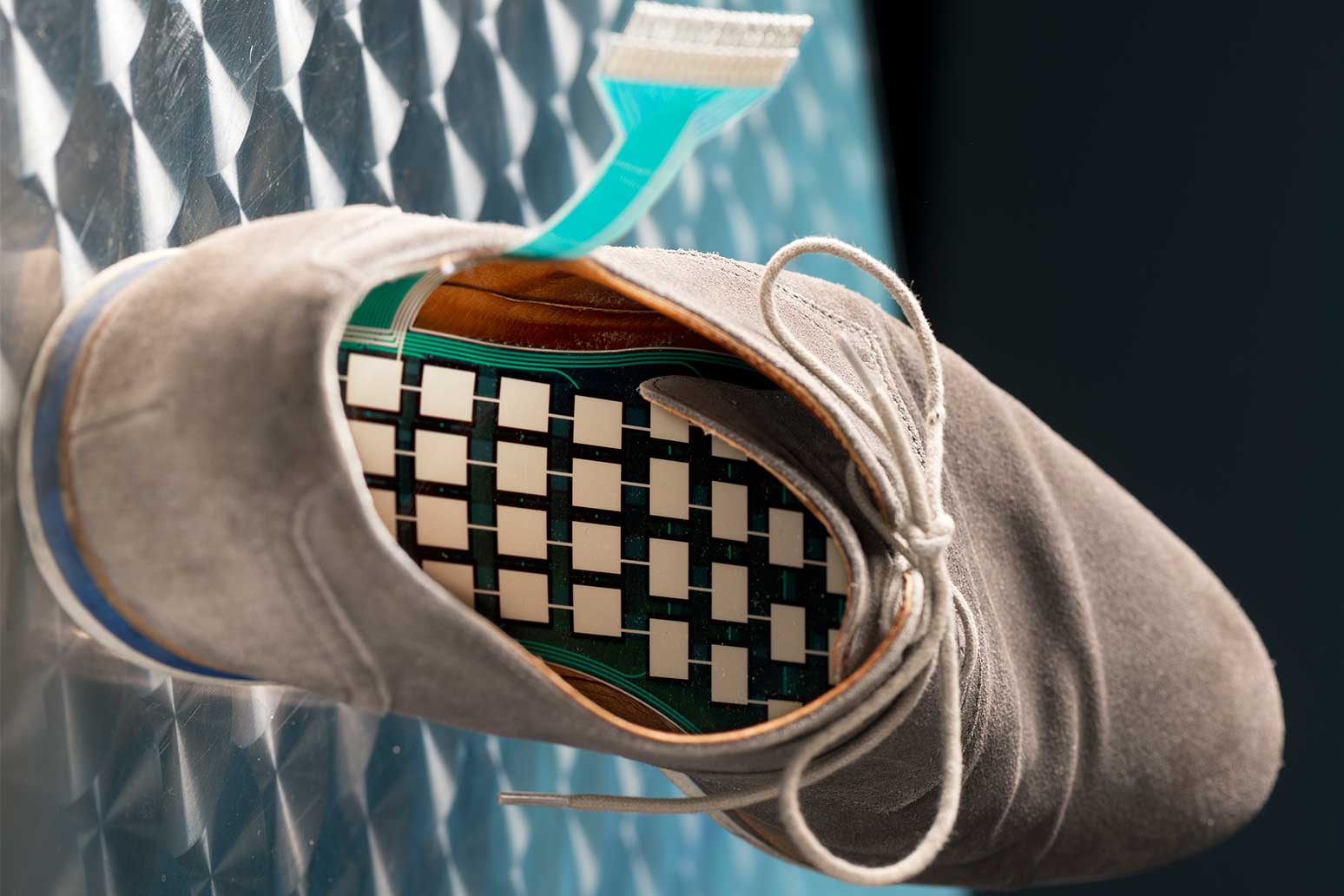Fraunhofer EMFT is developing intelligent plasters for the early detection of pressure ulcers in nursing care. For this purpose, work is being done on an AI-supported prophylaxis that can initiate preventive actions through early detection, thus making life easier for nursing staff and the person treating the patient.
AI-assisted prophylaxis of pressure ulcers
Project KIPRODE

Bedridden or paralyzed persons, but also people with diabetes, have an increased risk of pressure ulcers or pressure sores (pressure sores on the foot). These not only affect life quality but, if left untreated, can in the worst case lead to limb amputation. Incipient or infected chronic wounds are often not noticed by patients due to reduced nerve and pain perception or are not indicated to medical staff due to shame or ignorance. Especially in ambulant care, however, the persons to be treated cannot be constantly monitored.
The aim of the KIPRODE project is to use adapted sensor technology and automated prediction methods based on artificial intelligence (AI) to detect the development of wounds at an early stage and eventually prevent them. For this, researchers from Fraunhofer EMFT are working together with scientists from the Technical University of Munich at Klinikum Rechts der Isar, Fußnetz Bayern e.V. and Monks Vertriebsgesellschaft mbH on a prophylaxis tool with sensor plasters and a telemedical interface between medical professionals and the people being treated.
In the first step, flat sensor patches with wearable electronics are being developed that record various parameters in the area of the patient's tissue at risk, such as values for oxygen saturation, pressure, movement and temperature. In conjunction with telemedicine solutions, the data from the sensor system, together with other health information, could be transmitted directly to a panel of experts by the outpatient or inpatient caregiver.
As part of the project, the Fraunhofer EMFT team is developing the wearable sensor system to collect data from various commercial sensors, which will be worn by different patients in the clinical trial. After anonymization in line with data protection requirements and transmission via the Monks company, the data generated with this system will be analyzed at EMFT using AI methods (machine learning algorithms for time series analysis) in order to derive a prophylaxis tool.
The project is funded by the German Federal Ministry of Health under grant number ZMVI1-2520DAT50A.

